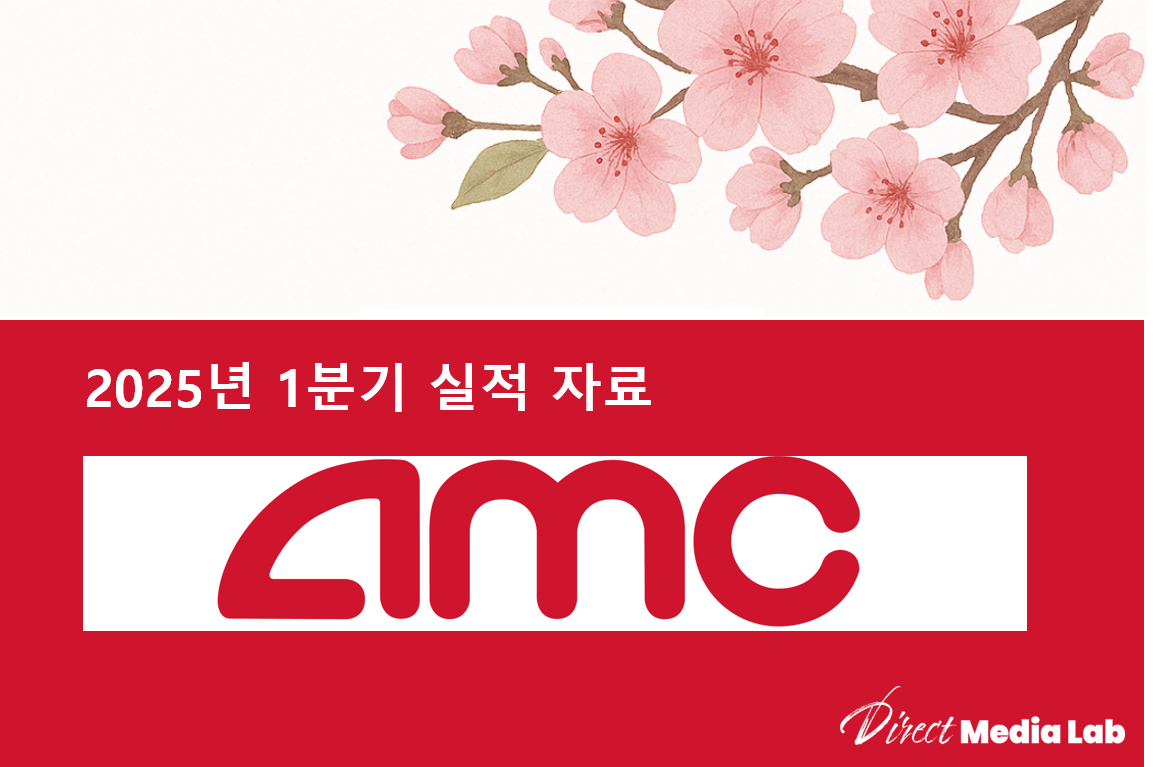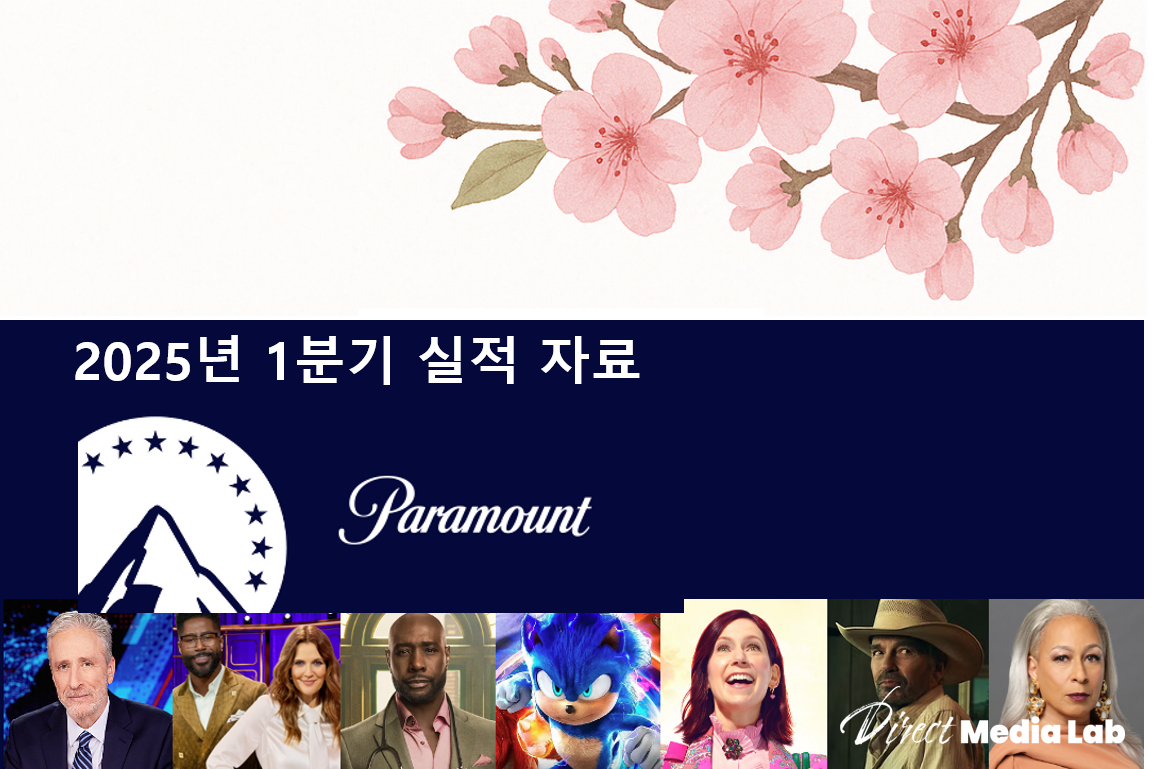[국회 엔터테크 포럼]소니 카르소노 한국 외대 교수, 미래의 문화 교류는 상호 대화(SONY KARSONO, Prof of Hankuk Uni of Foreign Studies, The future of cultural exchange is mutual dialog)
소니 교수 "한국-인도네시아의 문화 교류는 오랜 역사를 가지고 있으며, 최근 한류의 인도네시아 수용을 통해 더욱 강화"

"한국-인도네시아의 문화 교류는 오랜 역사를 가지고 있으며, 최근 한류의 인도네시아 수용을 통해 더욱 강화되었습니다. 영화 "파묘"와 "비나: 7일 전"을 통해 양국의 역사적 트라우마와 현대적 모순을 탐구하는 것이 중요합니다. 미래의 문화 교류는 상호 대화를 통해 양국의 근본적인 꿈과 욕구를 다루어야 합니다."
“Film as dream, film as music.No art passes our conscience in the way film does, and goes directly to our feelings, deep down into the dark rooms of our souls.”
Ingmar Bergman
Good afternoon.I am honored to talk here today about Korea-Indonesia cultural encounter. Korea-Indonesia relations has a long history and takes many forms. In the 15th century, a Javanese envoy visited the Joseon Court.1 Five centuries later, during theIndonesian Revolution (1945-1949), the Korean filmmaker Dr. Huyung contributed to the development of Indonesian cinema.2 Since 1994, many Indonesians haveworked in Korea. In 2010, for example, they numbered 25,822.
Likewise, many Koreans have lived and worked in Indonesia. In 2010, for instance, 30,000 Koreans resided in Indonesia, forming the largest foreign community there.3 As a culturalhistorian of the Malay World, however, I focus my speech today on Korea-Indonesia cultural exchange in the 21st century. In particular, I want to discuss the reception of the Korean Wave (hallyu) in Indonesia.
A useful way to understand the contemporary Indonesian enthusiasm for the Korean Wave is to see it as a recent manifestation of the great, centuries-old historical process that has continued to shape Southeast Asia: the adoption (and adaptation) of foreign cultural elements in the service of local needs and in support of developments already underway. Globalization, or rather glocalization, speeds up this process and makes it more complex.
What make Korean pop culture so attractive to Indonesians today? What needs do Indonesians try to meet by consuming Korean pop culture? What kinds of social change in Indonesia facilitate—and are facilitated by—the reception of the Korean Wave? These questions are worth asking, for they may shine a light on Korea-Indonesia cultural exchange.
Indeed, Indonesia’s reception of the Korean Wave is a huge topic.
One can actually write a whole book about it. So, to make the topic more manageable, I will explore it through a case study that involves two of the most successful Asian films in Indonesia in 2024. The first one is the Korean film Exhuma, directed by Jang Jae-hyun. And the second one is the Indonesian film Vina: Before 7 Days, directed by Anggy Ambara.
I have chosen to talk about Exhuma and Vina today because they have several things in common, and because the commonalities between them may help to explain the appeal that Korean pop culture has for many Indonesians.
From a commercial point of view, Exhuma and Vina are a box-office success. With 2.6 million admissions, Exhuma is the second highest-grossing Asian movie in Indonesia.1 As for Vina, this film has achieved 5.7 million viewership. In term ofgenre, both Exhuma and Vina belong are horror films. As faras the subject matter goes, the two films explore a historical trauma. From a theoretical point of view, Viana and Exhuma seem to offer a useful "window" to look at the contradictions of modern life.
Now, let us look at the stories that Exhuma and Vina have to offer. As a supernatural horror film, Exhuma follows the actions of a team of specialists: feng shui master Kim Sang-deok, mortician Ko Yeong-geun, shaman Lee Hwa-rim, and her protege Yoon Bong-gil. A wealthy Korean-American named Park Ji-yong tasks the team with the exhumation and relocation of his grandfather’s grave.
This is a response to a problem. As a result of the fact that Grandfather Park’s body is buried by his descendants at an improper site near the North Korean border, the spirit of Grandfather Park has been suffering so much and for so long.
The suffering so enrages him that he punishes his baby great-grandson with a mysterious illness. The exhumation and cremation of Grandfather Park’s mortal remains saves the baby’s life.
But the exorcism ritual also digs up and unleashes Japanese imperialism’s long-term, destructive, supernatural impact.
As it turns out, during the colonial period, Grandfather Park built his wealth by working as a pro-Japanese collaborator. So, he was a traitor to his own nation. To make things worse, even after his death,
Grandfather Park unwittingly continues to serve his long-dead Japanese masters. The film reveals that Grandfather Park’s grave is a cover for a tool of Japan’s political witchcraft against Korea. For, buried vertically beneath Grandfather Park’s coffin is another coffin containing the dead body of a murderous samurai who participated in the Japanese invasion of Korea in the late 16th century.
With a katana inserted in it, the standing samurai’s body serves the Japanese as a bewitched stake to block the flow of cosmic energy in Korea’s territory, weakening its national spirit. The onus is on Kim Sang-deok, Ko Yeong-geun, Lee Hwa-rim, and Yoon Bong-gil to slay the demonic samurai and save the country. Like Exhuma, Vina concerns the return of the dead.
Unlike in Exhuma, however, in which the angry ghosts come from the distant past, in Vina we have a vengeful spirit that comes from a very recent past. Set in the city of Cirebon, Indonesia, in 2016, the film tells the story of a teenage couple—Vina and her boyfriend Eky—who are brutally murdered by a motorcycle gang led by the young man Pegi.
The gang members rape and kill Vina. The rapists and murderers disposed of Vina’s and Eky’s bodies on the roadside below a flyover, making them look like the victims of a hit-and-run. Several days after her burial, Vina’s spirit, aggrieved and vengeful, possesses the body of her friend Linda to tell her family the truth about her violent death.
Impatient with the slow pace of the police investigation into her death and that of her boyfriend, Vina uses the limited time she has on earth (7 days) to avenge herself on Pegi, the person who—enraged by Vina’s resistance to his sexual harassment of her—has orchestrated her rape and murder.
The death of Pegi gives the film a narrative closure and an ultimate justice through supernatural action. This film, Vina: Before Seven Days, is based on a real-life incident. On August 27-28, 2016, in the West Java city of Cirebon, a motorcycle gang of 11 youths killedMuhammad Rizky, age 16, and murdered and raped his girlfriend, Vina Dewi Arsita, alsoage 16.
Three of the perpetrators of the crime were on the run. Eight were arrested and“convicted of attempted murder” and “seven” were to serve “life sentences.”
More than one week after Vina’s and Eky’s funerals, police investigators exhumed their bodies to perform autopsies, testing the hypothesis that their deaths were caused not by a traffic accident but by murder. For several days after Vina’s death, Linda—a friend of Vina’s—experienced possession by Vina’s spirit, who gave Vina’s relatives a chronological account of her rape and murder by the motorcycle gang.
Armed with the recording of Linda’s voice during spirit possession, Vina’s parents went to the police, reporting Vina’s death as a probable murder. Someone shared Linda’s voice recording on the social media and it went viral.
Eight years later, made with the consent of Vina’s parents, the film Vina: Before Seven Days emerged as one of Indonesia’s box-office hits, capturing public attention nationwide, generating enough mass-pressure for the police to re-open
investigation into the case. Vina’s family continues seeking closure and justice. For, of the 11 gang members involved in her murder, two remain on the run as we speak. There are two deep parallels between Exhuma and Vina to which I want to draw your attention. First, each in their own way, the popularity of Exhuma and Vina suggests that contemporary Koreans and Indonesians continue to live under the burden of history—with all its pains, traumas, anger, shame, guilt, infamies, and unfinished business.
In the case of Korea, the country’s invasion by the Japanese in the late 16th century, its occupation by the Japanese in 1910-1935, and its partition into North and South in 1945 all have inflicted a living, trans-generational wound on the national psyche, threatening to undermine Korea’s vitality from within, and placing the country’s younger generation under a spell.
Director Jang Jae-hyun seems to be saying in Exhuma that part of the remedy for Korea’s historical trauma may be found in its premodern traditions. In order that the collective historical trauma can finally be laid to rest, a feng-shui-like operation must be conducted to move it from the realm of darkness to the realm of light, that is, from public evasion to public discussion.
The operation, however, may cause all hell to break loose. As a preventive measure, the powers of shamanistic rituals, at once poetic and practical, can be mobilized to neutralize that destructive energy which the therapeutic exposure and treatment of historical wounds may unleash.
Once the historical traumas are healed, the nation can move on, freeing up more energies, which it can spend on the construction of a better future and on, perhaps, the reunification of Korea.
Some Indonesian viewers of Exhuma find themselves drawn to the film’s use of supernatural horror as a medium to talk about history, national and international. For example, a Twitter user writes how fantastic it would to analyze the way the story shifts gears from portraying the work of grave-relocation specialists to exploring the history of Korea-Japan relations.
In comparison to Exhuma, Vina seems to owe its success partly to the fact that it addresses itself to a domestic audience whose collective psyche carries within it the trauma of historical and everyday violence. From a historical standpoint, if the contents of Indonesia’s scholarly literature, popular novels, and public debate on social media are any indication, many Indonesians continue to suffer from the painful memories and the grave repercussions of the terror unleashed by major political conflicts in the country’s political history.
Among these are the national revolution of 1945-1949, the mass killings of 1965-1966, the East Timor genocide of 1975-1999, and the May 1998 riots. And from the perspective of everyday life, Indonesians continue to live under the constant threat of school bullying, high-school brawls, sexual harassment, domestic violence, violence against women, and urban inter-communal. In particular, between 2008 and 2019, cases of violence against women rose from 54,425 to 431,471.
1 Small wonder, therefore, that many Indonesians are drawn to domestic horror films, including Vina. For them, watching horror movies is a psychological training of sorts where they can learn to cope with, critique, and even derive pleasure from the shocks of everyday violence. For instance, an Indonesian mother took her teenage son to the cinema to see Vina.
She did this so that her son would learn to make good decisions in his day-to-day interaction with his peers.It is rewarding for us to look at the second parallel between Exhuma and Vina. In the first half of the 20th century, the Jewish-German philosopher asked himself why Western Europe experienced the 19th century simultaneously as an era of progress defined by “enormous technological and industrial transformations” and as an era of…spiritualism.
2 Here and now in Asia, both Korea and Indonesia seem to be experiencing the 21st century, too, as a Janus-faced era, which blends science and magic. And we find an expression of this curious pattern in Exhuma and Vina, whose stories are structured by the co-existence of rationalism and superstition.
For instance, no matter how highly educated Park Ji-yong is, when American scientific medicine has failed to cure his baby of a mysterious illness, he—out of desperation—enlists the help of Korean “magicians” in the form a feng shui master and two shamans.
Similarly, as portrayed in Vina, despite the legal-rational basis of their authority, and for all the scientific foundation of their methods of criminal investigation, the Indonesian police moves too slowly in their attempt to crack the case. It is the magical intervention of Vina’s spirit that pushes the police to act decisively and speeds up the arrest, trial, and sentencing of the murderers.
In sum, the common message in Exhuma and Vina seem to be that good life in Korea and Indonesia would consist in striking the right balance between rationalism and magic—one that may take the form of a synthesis between global rationalism and local shamanism, or between science and religion, or between engineering and rituals.To some degree, the shared experiences of Janus-faced modernity (that is, modernity with its promises and dangers) explain why Exhuma resonates with Indonesian moviegoers, some of whom may also have seen Vina.
Contemporary modernity has its historical roots in the clash between Japanese imperialism and Korean nationalism, in the intra-Korean ideological battle during the Cold War over the best road to progress (capitalism vs. communism), and in the creative tension between adoption and adaptation of foreign cultural elements, and in the quest for balance between joining the world and maintaining national identity.
In the case of contemporary Indonesia, the quest for modernity has transformed it into a more or less an industrial society, though not as successful as Korea. This achievement has come with a price, which includes the human and economic destruction that the revolution (1945-1949) brought about, the mass killings of 1965, and the bloody transition in 1998-1999 from authoritarianism to democracy.
As it turns out, the modernization of Indonesia has failed to solve the country’s fundamental contradictions—the city vs. the countryside, Muslims vs. non-Muslims, Java vs. the Outer Islands, men vs. women, majority vs. minorities, capitalism vs. social justice, the masses and the ruling elite. Today, these basic contradictions play out in a world made more dangerous by climate change, food insecurity, soaring energy prices, mounting debt, and the rise of rightwing extremism.
I would like to close my speech today with an idea that I think is worth testing. History shows, for instance, that the influence of Indian culture took deep roots in Indonesia for quite a long time, stretching from the 5th century to the 15th century.
This happened when, in an attempt
1) to better manage changes within their own societies, 2) to exploit changes occurring in the outside world, 3) to satisfy newly emerging needs, indigenous peoples in Indonesia decided that they needed to adopt—and adapt—various elements from Indic civilization, including religions (Hinduism and Buddhism), statecraft, languages (e.g., Sanskrit), scripts, visual arts, architecture, and literature (e.g., Mahabharata and Ramayana).
So, I think it makes a lot of sense that if the Korean Wave is to take deep roots, grow, and last long within the Indonesian society, then Korea may want to offer the kinds of ideas, of material objects, and of social-organization methods that respond to Indonesians’ fundamental dreams, nightmares, needs, and desires—ones that have to do, perhaps, with the contradictions of modernity. We can begin to imagine what these things are by engaging in intercultural dialog and cooperation. Thank you.
6줄 요약
- 한국-인도네시아 문화 교류: 양국은 오랜 역사와 다양한 형태의 관계를 가지고 있으며, 21세기 한류가 인도네시아에서 어떻게 받아들여지고 있는지에 대해 논의합니다.
- 사례 연구: 2024년 인도네시아에서 성공한 한국 영화 "엑스휴마"와 인도네시아 영화 "비나: 7일 전"을 통해 양국의 문화적 공통점을 탐구합니다.
- 영화 내용: "엑스휴마"는 역사적 트라우마를 다루는 초자연적 공포 영화이고, "비나"는 최근의 폭력 사건을 다루는 영화입니다.
- 역사적 부담: 두 영화는 한국과 인도네시아가 역사적 트라우마와 현대적 모순 속에서 살아가고 있음을 보여줍니다.
- 과학과 마법의 공존: 두 영화는 합리주의와 미신의 공존을 통해 현대 생활의 모순을 탐구합니다.
- 미래의 문화 교류: 한국과 인도네시아가 서로의 근본적인 꿈과 욕구를 다루기 위해 상호 문화적 대화와 협력이 필요하다고 제안합니다.
6-Line Summary
- Korea-Indonesia Cultural Exchange: The speech explores the long history and various forms of Korea-Indonesia relations, focusing on the reception of the Korean Wave in the 21st century.
- Case Study: Examines the success of the 2024 films "Exhuma" (Korean) and "Vina: Before 7 Days" (Indonesian) in Indonesia to understand cultural similarities.
- Film Content: "Exhuma" is a supernatural horror film dealing with historical trauma, while "Vina" addresses recent violence.
- Historical Burdens: Both films highlight how Korea and Indonesia live under historical trauma and modern contradictions.
- Science and Magic Coexistence: The films explore the coexistence of rationalism and superstition in modern life.
- Future Cultural Exchange: Suggests that mutual cultural dialogue and cooperation are necessary to address fundamental dreams and needs of both societies.
"꿈으로서의 영화, 음악으로서의 영화. 영화처럼 우리의 양심을 통과하여 영혼의 어두운 방 깊숙한 곳, 우리의 감정에 직접적으로 다가가는 예술은 없습니다." 잉마르 베리만
안녕하세요.
오늘 이 자리에서 한국과 인도네시아의 문화적 만남에 대해 이야기하게 되어 영광입니다. 한국-인도네시아 관계는 오랜 역사를 가지고 있으며 다양한 형태로 발전해 왔습니다. 15세기에는 자바 사신이 조선에 방문했고, 5세기 후인 인도네시아 혁명(1945~1949) 기간에는 한국인 영화감독 후영 박사가 인도네시아 영화 발전에 기여했습니다.
1994년 이후 많은 인도네시아 사람들이 한국에서 일하고 있습니다. 예를 들어 2010년에는 25,822명이었습니다. 마찬가지로 많은 한국인이 인도네시아에서 거주하고 일하고 있습니다. 예를 들어, 2010년에는 3만 명의 한국인이 인도네시아에 거주하며 최대 규모의 외국인 커뮤니티를 형성했습니다.
그러나 저는 말레이계의 문화사학자로서 오늘 강연에서 21세기 한국-인도네시아 문화 교류에 초점을 맞추고자 합니다. 특히 인도네시아에서 한류의 수용에 대해 이야기하고자 합니다. 한류에 대한 현대 인도네시아의 열광을 이해하는 유용한 방법은 한류가 동남아시아를 형성해 온 수 세기 동안의 위대한 역사적 과정, 즉 현지의 필요에 부응하고 이미 진행 중인 개발을 지원하기 위해 외국 문화 요소를 채택(및 적응)하는 과정의 최근 표현으로 보는 것입니다. 세계화, 즉 글로컬라이제이션은 이 과정을 가속화하고 더욱 복잡하게 만듭니다.
오늘날 인도네시아인들에게 한국 대중문화가 매력적인 이유는 무엇일까요?
인도네시아 사람들은 한국 대중문화를 소비함으로써 어떤 욕구를 충족하려고 할까요? 인도네시아의 어떤 사회적 변화가 한류 수용을 촉진하고, 또 한류 수용으로 인해 촉진되는가? 이러한 질문은 한국-인도네시아 문화 교류를 조명할 수 있는 중요한 질문입니다. 실제로 인도네시아의 한류 수용은 큰 화두입니다. 실제로 한 권의 책을 쓸 수 있을 정도입니다.
그래서 저는 2024년 인도네시아에서 가장 성공한 아시아 영화 두 편의 사례를 통해 이 주제를 좀 더 쉽게 이해할 수 있도록 살펴보겠습니다.
첫 번째는 장재현 감독의 한국 영화 '엑시마(파묘, Exhuma)’'입니다. 그리고 두 번째는 인도네시아 영화 비나: 비포7데이즈(Vina: Before 7 Days)입니다.
제가 오늘 엑슈마와 비나에 대해 이야기하기로 한 이유는 두 영화가 여러 가지 공통점을 가지고 있고, 그 공통점이 많은 인도네시아 사람들에게 한국 대중문화가 가진 매력을 설명하는 데 도움이 될 수 있기 때문입니다. 상업적인 관점에서 보면 엑슈마와 비나는 흥행에 성공했습니다. 260만 명의 관객을 동원한 엑슈마는 인도네시아에서 두 번째로 높은 수익을 올린 아시아 영화입니다. 비나의 경우 570만 관객을 달성했습니다. 장르 측면에서 보면 엑슈마와 비나는 모두 공포 영화에 속합니다. 소재만 놓고 보면 두 영화 모두 역사적 트라우마를 탐구합니다. 이론적 관점에서 볼 때 비아나와 엑슈마는 현대 생활의 모순을 살펴볼 수 있는 유용한 '창'을 제공하는 것 같습니다.
이제 '엑소시마'와 '비나'의 이야기를 살펴볼까요? 초자연 공포 영화인 파묘(엑시마)는 풍수 명인 김상덕, 역술가 고영근, 무속인 이화림, 그리고 그녀의 제자 윤봉길 등 전문가 팀의 활약상을 따라갑니다. 부유한 한인 박지용 씨가 할아버지의 무덤을 발굴하고 이장하는 일을 팀에 의뢰합니다. 이것은 문제에 대한 대응입니다.
박 할아버지의 시신이 북한 국경 근처의 부적절한 장소에 후손들에 의해 묻힌 탓에 박 할아버지의 영혼은 너무도 오랫동안 고통을 받고 있다.
그 고통에 분노한 할아버지는 아기 증손자에게 의문의 병을 내려 벌을 내리고, 박 할아버지의 유골을 발굴해 화장함으로써 아기의 목숨을 구한다. 그러나 제령 의식은 일본 제국주의의 장기적이고 파괴적인 초자연적 영향을 파헤치고 드러내기도 합니다. 알고 보니 식민지 시대에 박태준 할아버지는 친일 협력자로 일하며 부를 쌓았습니다. 따라서 그는 조국에 대한 반역자였습니다. 설상가상으로 박 할아버지는 돌아가신 후에도 자신도 모르게 죽은 일본 주인을 계속 섬기고 있습니다.
영화는 박 할아버지의 무덤이 한국에 대한 일본의 정치적 주술 도구의 덮개라는 사실을 드러냅니다. 박 할아버지의 관 바로 아래에는 16세기 후반 일본의 조선 침략에 가담한 살인 사무라이의 시신이 담긴 또 다른 관이 수직으로 묻혀 있었기 때문입니다. 일본이 조선 영토의 우주 기운의 흐름을 차단하고 민족정기를 약화시키기 위해 일본인들이 주술적인 말뚝으로 삼은 것이 바로 이 서있는 무사의 시신에 칼이 꽂혀 있는 것입니다. 김상덕, 고영근, 이화림, 윤봉길 의사는 마귀 무사를 처단하고 나라를 구해야 하는 임무를 맡게 됩니다.
파묘와 마찬가지로 비나 역시 죽은 자의 귀환에 관한 이야기입니다. 하지만 엑슈마에서 분노한 유령이 먼 과거에서 온 것과 달리, 비나에서는 아주 최근의 과거에서 온 복수심에 불타는 영혼이 등장합니다. 2016년 인도네시아 찌레본시를 배경으로 한 이 영화는 10대 커플인 비나와 그녀의 남자친구 에키가 청년 페기가 이끄는 오토바이 갱단에 의해 잔인하게 살해당하는 이야기를 담고 있습니다. 갱단원들은 비나를 강간하고 살해합니다.
강간범과 살인범은 비나와 에키의 시신을 고가도로 아래 도로변에 버려 뺑소니 희생자처럼 보이게 만들었습니다. 장례를 치른 지 며칠 후, 분노와 복수심으로 가득 찬 비나의 영혼이 친구 린다의 몸에 빙의하여 가족에게 자신의 폭력적인 죽음에 대한 진실을 전합니다.
자신과 남자친구의 죽음에 대한 경찰 수사가 더디게 진행되는 것에 참다못한 비나는 7일이라는 제한된 시간을 이용해 비나의 성희롱에 대한 저항에 분노한 페기에게 강간과 살인을 사주한 자에게 복수합니다. 페기의 죽음으로 영화는 내러티브가 마무리되고 초자연적인 액션을 통해 궁극적인 정의가 실현됩니다. 이 영화, 비나: 비포 세븐 데이즈는 실제 사건을 모티브로 한 영화입니다.
2016년 8월 27~28일 서부자바주 찌레본에서 11명의 청소년으로 구성된 오토바이 갱단이 16세의 무하마드 리즈키를 살해하고 그의 여자친구인 비나 데위 아르시타를 살해하고 강간한 사건이 발생했습니다. 이 사건의 가해자 중 3명은 도주 중이었습니다. 8명은 체포되어 "살인 미수죄"로 유죄 판결을 받았고, 7명은 "종신형"을 선고받았습니다.
비나와 에키의 장례식이 끝난 지 일주일이 지난 후 경찰 수사관들은 시신을 발굴하여 부검을 실시하여 이들의 사망이 교통사고가 아닌 살인에 의한 것이라는 가설을 시험했습니다. 비나가 사망한 후 며칠 동안 비나의 친구였던 린다(Linda)는 비나의 영혼에 빙의되는 경험을 했고, 비나의 친척들에게 오토바이 갱단에 의한 강간과 살인에 대한 연대기적 설명을 들려주었습니다. 비나의 부모는 영혼에 빙의된 린다의 목소리를 녹음한 자료를 가지고 경찰에 가서 비나의 죽음을 살인 사건으로 신고했습니다. 누군가 린다의 음성 녹음 파일을 소셜 미디어에 공유했고, 이 녹음 파일은 입소문을 타기 시작했습니다.
8년 후, 비나의 부모님의 동의를 얻어 제작된 영화 비나: 비포 세븐 데이즈는 인도네시아의 흥행 히트작으로 떠오르며 전국적으로 대중의 관심을 끌었고, 경찰이 재개봉을 결정할 만큼의 대중적 압력을 불러일으켰습니다. 여전히 이 사건은 진행형입니다. 비나의 가족은 사건의 종결과 정의를 계속 추구하고 있습니다. 비나를 살해한 11명의 갱단원 중 2명은 현재도 도주 중이기 때문입니다.
엑슈마와 비나 사이에는 두 가지 깊은 유사점이 있습니다. 첫째, 엑슈마와 비나의 인기는 각자의 방식으로 현대 한국인과 인도네시아인이 역사의 고통, 트라우마, 분노, 수치심, 죄책감, 불명예, 미완의 사업 등 역사의 짐을 안고 살아가고 있음을 시사합니다. 한국의 경우 16세기 후반 일제의 침략, 1910~1935년 일제의 점령, 1945년 남북 분단 등 세대를 초월한 상처를 국민 정신에 남겼으며, 이는 한국의 활력을 내부로부터 약화시키고 한국의 젊은 세대를 마법에 걸리게 만들었습니다.
첫째, 엑슈마와 비나의 인기는 각자의 방식으로 현대 한국인과 인도네시아인이 역사의 고통, 트라우마, 분노, 수치심, 죄책감, 불명예, 미완의 사업 등 역사의 짐을 안고 살아가고 있음을 시사합니다. 한국의 경우 16세기 후반 일제의 침략, 1910~1935년 일제의 점령, 1945년 남북 분단 등 세대를 초월한 상처를 국민 정신에 남겼으며, 이는 한국의 활력을 내부로부터 약화시키고 한국의 젊은 세대를 마법에 걸리게 만들었습니다.
장재현 감독은 ‘엑슈마’에서 한국의 역사적 트라우마에 대한 치유책의 일부를 전근대적 전통에서 찾을 수 있다고 말하는 것 같습니다. 집단적 역사적 트라우마를 마침내 잠재우기 위해서는 이를 어둠의 영역에서 빛의 영역으로, 즉 공공의 회피에서 공론의 장으로 옮기는 풍수적 수술이 필요하다는 것이다. 그러나 이 작업은 모든 지옥이 풀릴 수 있습니다. 예방 조치로, 시적이면서도 실용적인 샤머니즘 의식의 힘을 동원하여 역사적 상처의 노출과 치료가 불러올 수 있는 파괴적인 에너지를 무력화할 수 있습니다.
역사적 트라우마가 치유되면 국가는 더 나은 미래 건설과 통일을 위해 더 많은 에너지를 확보할 수 있습니다.엑슈마의 일부 인도네시아 시청자들은 영화가 초자연적 공포를 매개로 국내 및 국제 역사에 대해 이야기하는 데 매력을 느낍니다. 예를 들어, 한 트위터 사용자는 무덤 이장 전문가들의 작업을 묘사하는 것에서 한일 관계의 역사를 탐구하는 것으로 이야기가 전환되는 방식을 분석하는 것이 얼마나 환상적인지 썼습니다.
엑슈마와 비교했을 때, 비나는 역사적, 일상적 폭력의 트라우마를 집단적 정신에 담고 있는 국내 관객을 대상으로 했다는 점에서 부분적으로 성공을 거둔 것으로 보입니다. 역사적 관점에서 인도네시아의 학술 문학, 대중 소설, 소셜 미디어의 공개 토론 내용을 보면 많은 인도네시아 사람들이 인도네시아 정치사에서 주요 정치적 갈등이 촉발한 테러의 고통스러운 기억과 심각한 후유증으로 여전히 고통받고 있습니다.
1945-1949년의 국가 혁명, 1965-1966년의 대량 학살, 1975-1999년의 동티모르 대량 학살, 1998년 5월 폭동 등이 그 예입니다. 또한 일상 생활의 관점에서 보면 인도네시아 사람들은 학교 폭력, 학교 난투극, 성희롱, 가정 폭력, 여성 폭력, 도시 공동체의 끊임없는 위협 속에서 살아가고 있습니다. 특히 2008년부터 2019년까지 여성에 대한 폭력 사건은 54,425건에서 431,471건으로 증가했습니다.
따라서 많은 인도네시아인들이 비나를 비롯한 국내 공포 영화에 열광하는 것은 당연한 일입니다. 이들에게 공포 영화 관람은 일상적인 폭력의 충격에 대처하고 비판하는 법을 배우고 심지어 즐거움을 얻을 수 있는 일종의 심리적 훈련입니다. 예를 들어, 인도네시아의 한 어머니는 십대 아들을 데리고 영화관에 가서 비나를 보았습니다.
아들이 또래 친구들과의 일상적인 상호작용에서 올바른 결정을 내리는 법을 배우도록 하기 위해서였습니다. 엑슈마와 비나 사이의 두 번째 유사점을 살펴보는 것은 우리에게 보람 있는 일입니다. 20세기 전반, 유대계 독일인 철학자는 왜 서유럽은 19세기를 "엄청난 기술 및 산업적 변화"로 정의되는 진보의 시대인 동시에... 영성주의의 시대로 경험했는지 자문했습니다.
지금 아시아에서는 한국과 인도네시아 모두 21세기를 과학과 마술이 혼합된 야누스의 얼굴로 경험하고 있는 것 같습니다. 그리고 우리는 합리주의와 미신이 공존하는 이야기로 구성된 엑슈마와 비나에서 이러한 기묘한 패턴의 표현을 발견할 수 있습니다. 예를 들어, 박지용은 아무리 고학력자라 해도 미국 과학 의학이 아기의 병을 고치지 못하자 절박한 심정으로 풍수 명인과 무당 두 명의 도움을 받습니다.
마찬가지로 비나에서 묘사된 것처럼 인도네시아 경찰은 법적-합리적 권한의 근거와 범죄 수사 방법의 모든 과학적 기반에도 불구하고 사건을 해결하기 위해 너무 느리게 움직입니다. 경찰이 단호하게 행동하도록 밀어붙이고 살인범의 체포, 재판, 선고를 앞당기는 것은 비나의 영혼이 마술처럼 개입한 덕분입니다.
요약하자면, 엑슈마와 비나의 공통된 메시지는 한국과 인도네시아에서 좋은 삶이란 합리주의와 마법 사이의 적절한 균형, 즉 글로벌 합리주의와 지역 샤머니즘, 과학과 종교, 공학과 의례 사이의 종합의 형태를 띠는 것일 수 있다는 것입니다.야누스와 마주한 근대성(즉, 약속과 위험을 지닌 근대성)의 공통된 경험은 엑슈마가 인도네시아 영화 관객들에게 공감을 얻는 이유를 어느 정도 설명하며, 그중 일부는 비나도 관람했을 수 있습니다. 근대성은 일본 제국주의와 한국 민족주의의 충돌, 자본주의 대 공산주의라는 최선의 길을 둘러싼 냉전 시기 한국 내부의 이념 싸움, 외국 문화 요소의 수용과 적응 사이의 창조적 긴장, 세계 참여와 국가 정체성 유지 사이의 균형 추구에 그 역사적 뿌리를 두고 있습니다.
현대 인도네시아의 경우, 근대성에 대한 추구는 한국만큼 성공적이지는 않았지만 어느 정도 산업 사회로 변모시켰습니다. 이러한 성과에는 혁명(1945-1949)이 가져온 인적, 경제적 파괴, 1965년의 대량 학살, 1998-1999년 권위주의에서 민주주의로의 피비린내 나는 전환 등 대가가 따랐습니다. 결과적으로 인도네시아의 근대화는 도시와 시골, 무슬림과 비무슬림, 자바섬과 외곽 섬, 남성과 여성, 다수 대 소수, 자본주의 대 사회 정의, 대중과 지배 엘리트 등 인도네시아의 근본적인 모순을 해결하지 못했습니다.
오늘날 이러한 기본적인 모순은 기후 변화, 식량 불안, 치솟는 에너지 가격, 늘어나는 부채, 우익 극단주의의 부상으로 더욱 위험해진 세상에서 더욱 심화되고 있습니다. 저는 오늘 제 연설을 시험해 볼 가치가 있다고 생각되는 한 가지 아이디어로 마무리하고자 합니다. 예를 들어, 역사에 따르면 인도 문화의 영향은 5세기부터 15세기까지 꽤 오랫동안 인도네시아에 깊은 뿌리를 내렸습니다.
인도네시아 원주민들은 1) 사회 내부의 변화를 더 잘 관리하고, 2) 외부 세계에서 일어나는 변화를 이용하고, 3) 새롭게 떠오르는 욕구를 충족시키기 위해 종교(힌두교와 불교), 정치, 언어(산스크리트어 등), 문자, 시각 예술, 건축, 문학(마하바라타, 라마야나 등) 등 인디 문명의 다양한 요소를 채택하고 적용해야 한다고 결정했습니다.
따라서 한류가 인도네시아 사회에 깊이 뿌리를 내리고 성장하며 오래 지속되려면 인도네시아 사람들의 근본적인 꿈, 악몽, 필요, 욕망, 즉 근대성의 모순에 대응하는 아이디어, 물질적 대상, 사회 조직 방식을 제공해야 한다는 것은 당연한 일이라고 생각합니다. 우리는 문화 간 대화와 협력에 참여함으로써 이러한 것들이 무엇인지 상상하기 시작할 수 있습니다.
감사합니다.
뉴스레터를 구독하세요.
지금 뉴스레터를 구독하세요.






![[프리미엄 리포트] 미국 케이블TV 2025, 변화와 미래 전략](https://storage.googleapis.com/cdn.media.bluedot.so/bluedot.directmedialab/2025/05/vj931j_202505270106.png)




